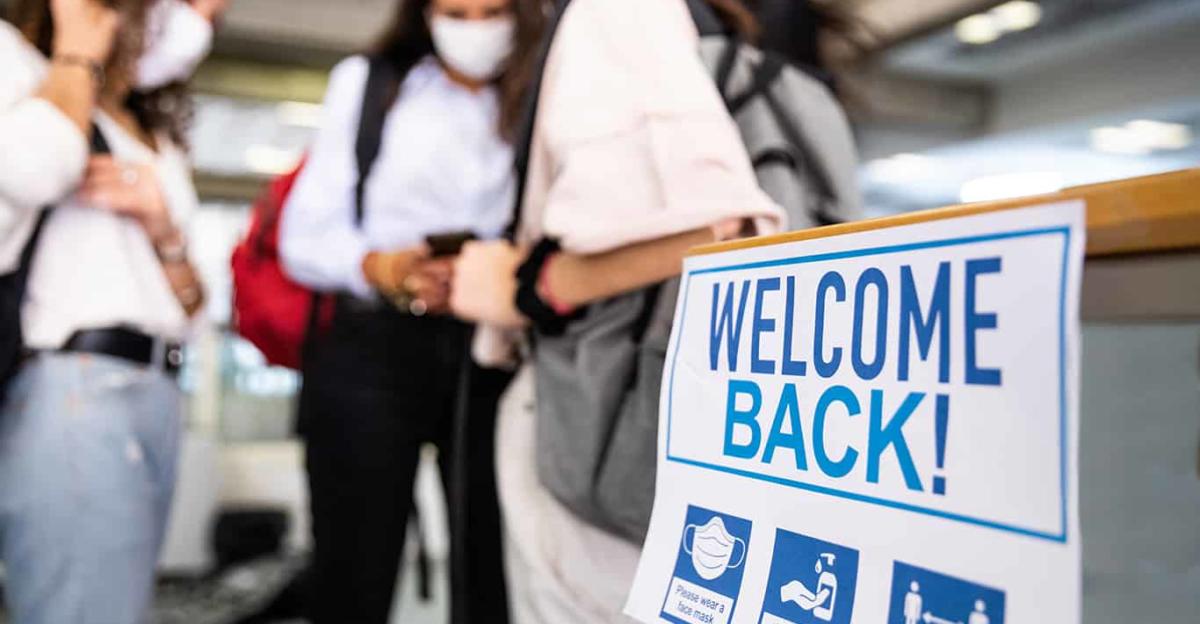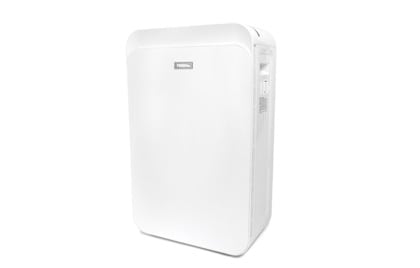Schools must have a solution for disinfecting learning spaces that is effective and that stakeholders can fully trust during cold and flu season.
Currently, the most popular strategies employed by schools are disinfecting surfaces with chemical sprays and using low-rated MERV filters to purify the air that people breathe. Yet, both methods have shortcomings that could put teachers, students, and staff at risk.
Fortunately, there are better ways to clean and disinfect learning spaces. This article will look at three key alternatives that are more effective for use in schools.
Problems with disinfecting sprays
Many school systems are spraying EPA-approved chemical agents throughout classrooms and other learning spaces on off-days for students and staff. (A popular cleaning regimen involves spraying classrooms twice per week, on Wednesdays and on weekends, in between the transition from one cohort of students to another for in-person learning.)
Although these chemicals are EPA-approved, they could still pose risks, especially for individuals who have asthma, allergies, or other respiratory issues. No one really knows the long-term health effects of spraying powerful chemicals so frequently within enclosed spaces that might have poor ventilation, particularly when these spaces are used for hours at a time by teachers, staff, and children — and some health experts have begun sounding the alarm about aggressive spraying practices in general.
“This is a hazardous proposition,” immunologist Claudia Miller told Bloomberg.
Many cleaning companies use electrostatic sprayers, or machines that positively charge and aerosolize small droplets of cleaning solution. Spraying is fast, allowing cleaners to cover 14,000 square feet of space per hour, Bloomberg reports — and the positive charge allows the solution to stick to surfaces. However, “the risks of aerosolizing many disinfectants haven’t been studied,” Ian Cull, president of Indoor Sciences, says within the same article. “And there are very few [disinfectants] that are approved for aerosolizing, misting, or fogging.”
Problems with air filtration
As we learn more about how viruses spread, it’s becoming increasingly clear that the vast majority of cases of illness occur through airborne transmission. This is why air quality in schools is such a critical concern. To protect students and staff from getting sick, many schools are using MERV filtration systems to purify the air within their buildings.
MERV stands for “minimum efficiency reporting value” and is a measurement scale from 1 to 20 designed by the American Society of Heating, Refrigeration, and Air Conditioning Engineers (ASHRAE) to report the effectiveness of air filters. Unfortunately, because of the age of many HVAC systems in schools today, the best many school sites can do is the employment of MERV 5 to MERV 7 filters. While these MERV ratings are good at trapping many pollutants like dust, pollen, and mold, they fall short in terms of providing an adequate defense against bacteria and viruses. Instead, wherever possible, school sites should be utilizing HEPA filters to purify the air.
HEPA stands for “high-efficiency particulate arresting,” and these filters are good at pulling microbials and other impurities from the air and holding onto them so they cannot recirculate. According to this article from the MD Anderson Center at the University of Texas, the fibers in a HEPA filter are designed to trap particulates as small as 0.01 micron in diameter — or a fraction of the width of a human hair.
However, the filters must be replaced periodically as recommended by the manufacturer, such as every six weeks for some products. As the filters become dirty, they also become less effective. Changing them regularly requires a lot of discipline, not to mention money and staff time.
Even if the filters are changed regularly, HEPA filters still are not 100-percent effective. The MD Anderson Center says they are up to 99.97% effective at trapping COVID when run over long periods of time.
More effective techniques
To clean and disinfect their learning spaces more effectively, K-12 leaders can learn a lot from hospitals and other sterile environments. For instance, here are three alternative technologies that hospitals have been using for years to remove harmful microbials both on surfaces and in the air — and these techniques are proving to be effective in destroying viruses as well.
Ultraviolet germicidal irradiation (UVGI): This involves the safe and responsible use of ultraviolet-C (UVC) light rays to kill the virus either airborne or on surfaces. Direct exposure to UVC radiation inactivates the virus, although schools must use UVC lamps with caution, as UVC exposure to human skin or eyes can cause injuries. Using an air purifier that contains built-in UVC lamps as well as a HEPA filter adds another layer of protection and is more effective than simply using a filter alone.
Bipolar ionization: With this technology, charged ions are released into the atmosphere, where they naturally attach to expelled breath droplets and dust particles that can transport viruses. The resulting particles are larger and more dense, so they either fall below breathing level or can be trapped more easily within an air filter. At the same time, the ions produce a chemical reaction on the cell membrane surface that inactivates the virus. The technology was first used in the U.S. in the 1970s to control pathogens in food manufacturing, Business Insider reports — and today it’s used in hospitals, airports, and hotels.
Photocatalytic oxidation (PCO): This process involves shining UVC light onto a metal sheet coated with titanium dioxide, releasing oxidizers that destroy viruses and other toxins by breaking them down into carbon dioxide and water vapor. Whereas bipolar ionization produces ozone — a gas regulated by the EPA and state air quality boards like the California Air Resources Board (CARB), which can trigger a variety of health problems (particularly for children and people of all ages who have lung diseases such as asthma) — PCO produces only water vapor as a byproduct.
Products that use one or more of these technologies to purify the air and/or disinfect surfaces could be more suitable for use in a learning environment. Although these technologies were once thought to be beyond the reach of schools, that is now changing as the technologies improve and manufacturers release more solutions.
How School Specialty can help
After extensive research, School Specialty has partnered with a few select manufacturers to offer curated solutions that are safer and more effective disinfecting options for schools. These products, which take full advantage of the technologies just mentioned, include solutions for disinfecting learning materials, such as art supplies, or STEM lab equipment; solutions intended to filtrate and disinfect the air of an entire classroom; and solutions that can help filtrate and disinfect the air of an entire school site.
Solutions for disinfecting materials in a classroom include UVC cabinets like the UV Tech Tub from Copernicus Educational Products, which use UVGI lamps to kill viruses and other germs in under two minutes — allowing educators to disinfect materials within a class and between class periods, so the next class of students can use them safely.
Solutions for air filtration and disinfecting of classrooms include room air purifiers and even UVC robots. For instance, the TRIO Plus Portable Air Purifier from Field Controls, combines three air treatment processes in a single, lightweight, portable unit that is extremely quiet. First, it houses multiple filters, including a MERV particulate filter, a carbon filter, and a true HEPA filter; second, it employs germicidal irradiation using UVC lamps; and third, it employs PCO air purification. It can clean the air in a typical classroom of 775 square feet three times every hour. ADIBOT UVC robots from UBTECH, use UVGI lamps mounted to a small, cart-sized apparatus to irradiate the air and surfaces within a classroom. The robots can irradiate an entire classroom in less than three minutes.
Solutions for air filtration and disinfection throughout an entire school site involve the installation of one or more of these technologies within a building’s Air Handling Unit (AHU), HVAC system, and ventilation duct work.
To learn more about these solutions, contact us.
Michael Crumlin
Mike Crumlin “MAC” leads the business development activity for School Specialty. A product of Prince George’s County Public schools, MAC is a graduate of West Point and the Harvard Business School. After service as an Army officer and special operations pilot, he pursued a 25-year career in high tech, most of it in Silicon Valley. MAC first sought to serve school-aged children when he stood for and won a House seat to the Maryland General Assembly. Today, in his role with School Specialty, MAC seeks to serve school districts and school-aged children, and pay homage to his parents, who were both 30-year veterans of the D.C. Public School System.
Read more posts by Michael Crumlin–>









Leave a Reply